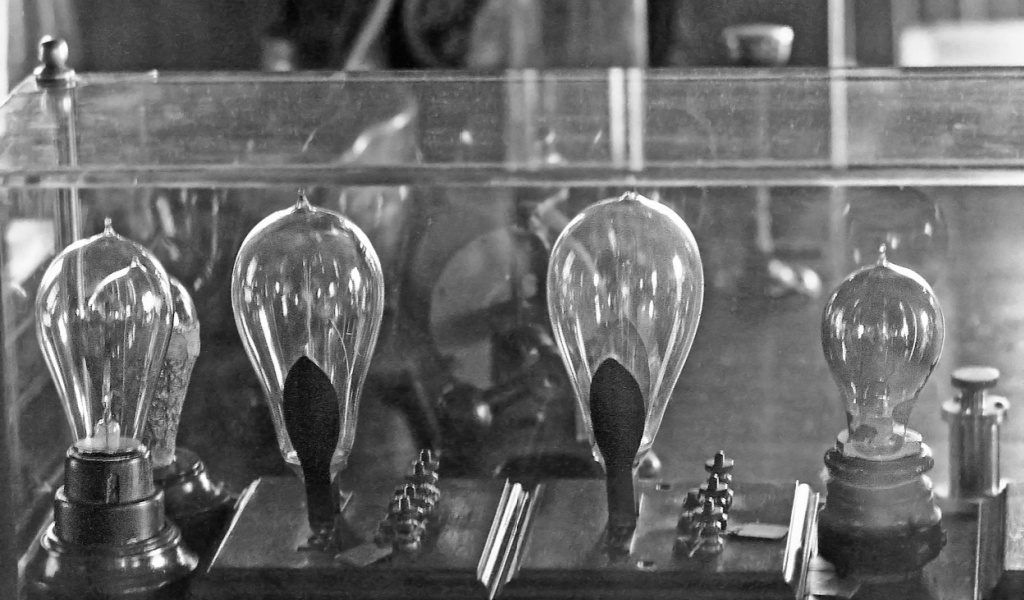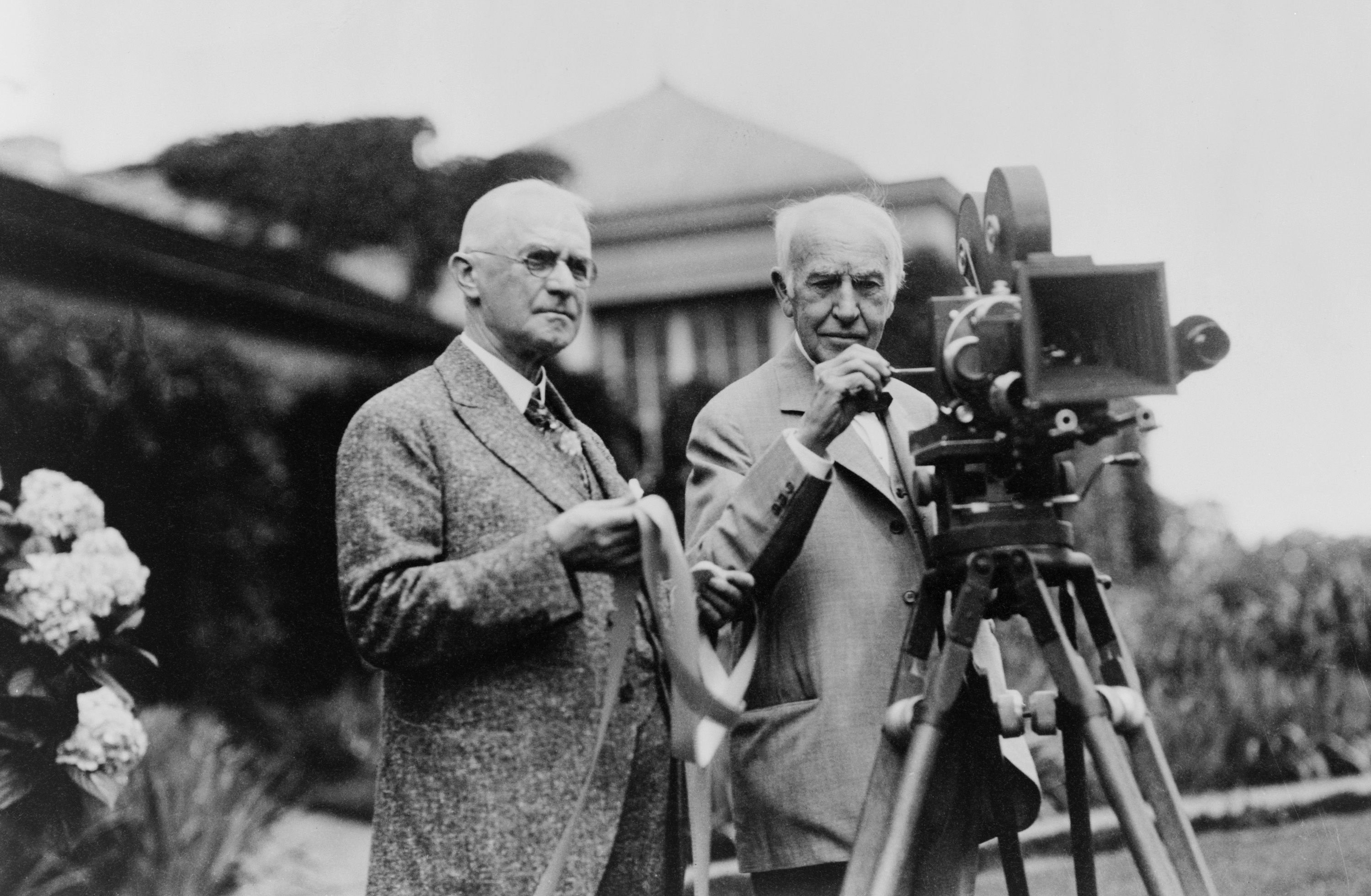When you think of Thomas Edison, the humble lightbulb is likely the first thing that pops into your mind. Edison is often admired as one of the greatest inventors in history, but his contribution to modern technology extends far beyond just making our homes brighter. With over 1,000 patents under his name, he transformed how we live, work, and play by progressing trades like electricity, sound recording, and telecommunication. Let’s learn about seven incredible inventions of Edison that still impact our day-to-day lives.

Light Bulb
It is impossible to begin this journey without recognizing the most legendary creation of Edison: the radiant light bulb. Although he did not create the light bulb from scratch, he was the first to develop it for practical use successfully. Before Edison, many creators had experimented with electric lighting, but their proposals were impractical or defective. In 1879, after years of testing with diverse supplies and filaments, Edison finally invented a bulb that lasted more than 1,200 hours. He changed how we light our homes forever by creating a practical and reasonable light bulb, demonstrating how electric lighting can replace gas lamps.
Alkaline Storage Battery
It’s difficult to imagine life in the modern world without rechargeable batteries, which power everything from smartphones to electric cars. Edison made noteworthy efforts in battery technology with his discovery of the alkaline storage battery in the early 1900s. Unlike the earlier lead-acid batteries, Edison’s strategy was more effective, long-lasting, and could deliver a higher energy mass. This invention not only developed electric vehicles in the past but also laid the basis for rechargeable batteries that we depend on presently.
Phonograph
Can you imagine living without songs streaming, vinyl records, or even the radio? Edison’s creation of the phonograph in 1877 was revolutionary. It was the first device with the ability to record and replicate audio, letting people listen to music in their own houses. It used a cylinder covered in tin foil to capture sound vibrations. Although the sound quality was far from perfect, the phonograph was outstanding for the time. Edison’s discovery laid the foundation for the current music field, allowing music sharing and enjoyment on a level that had never been possible previously.
Mimeograph
Created by Edison in 1876, the mimeograph was a revolutionary gadget for duplicating written material. At a time when replicating paperwork was tricky and time-consuming, this device provided quicker and more effective results. The mimeograph became a standard device in companies, schools, and churches, letting institutions distribute data effortlessly and at a reasonable cost. It played a noteworthy part in educational settings, allowing teachers to make duplicates of questionnaires and leaflets for their pupils.
Electric Power Distribution System
Edison didn’t just create devices- he also set the basis for the electrical infrastructure that drives our lives. In 1882, he started the Pearl Street Station in New York City, the first industrial power plant to distribute electricity to houses and companies. Edison created a complete system for distributing power, including the essential switches, wiring, and meters necessary to make it possible. Hence, it was not only about generating power. His work in electrical power supply permitted towns to become well-lit and changed day-to-day life, allowing us to work and socialize even at night.

Motion Picture Camera
Edison discovered the field of moving images in addition to sound. In the late 1800s, he established the Kinetoscope, a device that lets people watch short movies. Like a peep-show machine that utilized a film strip, the audience could watch moving pictures by looking over a viewer at the top. Even though it was a simple creation, it signified the beginning of the movie business. Edison’s invention of motion pictures gradually paved the way for the birth of cinema as it exists today, creating the framework for the hit movies we all enjoy.
Carbon Microphone
Edison’s influence was not restricted to lighting and theater; he also made noteworthy efforts in telecommunication. In 1877, he created the carbon microphone, which notably upgraded the sound quality of telephones. Before this creation, telephone communication was frequently distorted and unclear. His carbon microphone transformed sound waves into electrical indications more effectively, resulting in clearer discussions across long distances. This innovation played an important part in making telephones a trustworthy method of communication, eventually connecting people worldwide.
Heritage of Invention
Edison’s creative essence did not just produce revolutionary machinery; it also promoted an innovative culture. He believed in the significance of teamwork and cooperation, so he launched the first industrial research lab in New Jersey. This radically changed the solitary inventor stereotype, indicating that great ideas often emerge from teamwork. Edison’s invention strategy inspired numerous entrepreneurs and inventors who came after him.
Conclusion
The impact of Thomas Edison’s inventions is tremendous. From the simple yet revolutionary light bulb to the complicated electrical power supply systems, his work has laid the basis for the benefits we enjoy presently. His vision of an electrically powered future and his inventive intellect have made a lasting impression on the world.
Therefore, the next time you play music or turn on a switch, take a minute to cherish Thomas Edison’s outstanding legacy—a legacy that glows as radiantly as the light bulbs he assisted in bringing into our lives!



